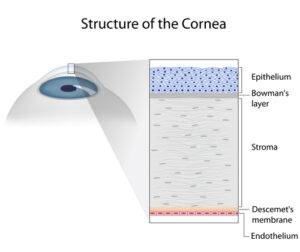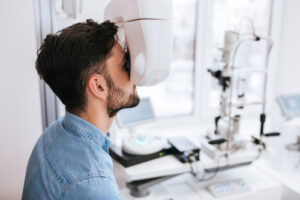Over the last few decades, LASIK has revolutionized how people handle vision problems. Wearing glasses and contact lenses no longer have to be the only way to correct your vision if you qualify for the vision correction procedure.
LASIK has been the answer for millions of people that have longed for better eyesight without glasses or contacts. With modern laser and computer mapping technology, the procedure has become incredibly safe while producing reliable results as it continues to evolve.
LASIK is not perfect, however, and it has limitations. If you want to undergo LASIK, you must first qualify as a candidate by having a LASIK consultation.
Having a LASIK consultation is the only way to know if you’re a candidate for the procedure. Only performing LASIK on qualified candidates helps ensure that only people who should get LASIK will.
Various factors go into determining whether someone is a LASIK candidate. These candidacy requirements are not in place to make LASIK exclusive for no reason.
Instead, they exist to give you the best chance at achieving incredible and long-lasting results. Keep reading to find out how to know if you’re a good LASIK candidate!
What Your Eye Doctor Looks For During Your LASIK Consultation
The consultation will take a few hours, as it includes a comprehensive eye exam to give your eye doctor a good overview of how healthy your eyes are. Here are some of the essential criteria you will need to fit to be eligible to receive LASIK.
You must be over the age of 18
LASIK is only FDA-approved for patients who are at least 18 years old. Performing LASIK on someone younger could mean not getting the results you want or needing an enhancement.
When you’re in your teenage years, your eyes are still developing. Although you can get LASIK when you’re 18, many LASIK surgeons recommend patients wait until their mid to late twenties.
Waiting is the best way to know that your eyes are stable and won’t change after LASIK. If your eyes seem like they are still changing or developing, you’re best off waiting to have LASIK.
Your prescription must be stable for at least a year
If you’re looking for visual freedom from glasses and contact lenses, it’s crucial to have a stable prescription. At a minimum, this means your prescription needs to remain unchanged for a year.
Some LASIK surgeons require your eyes to remain unchanged for at least two years before they’ll consider performing LASIK on a patient.
Your eyes must be healthy
While LASIK surgery is not particularly invasive, it does involve creating an incision in your cornea and removing a small amount of tissue. Having LASIK means that your eyes need to be healthy and have the ability to recover.
If you have an existing problem like dry eye syndrome, you need to have this under control before having LASIK. You also can’t have any pre-existing conditions like cataracts, age-related macular degeneration, or glaucoma.
You must be in good health
Because having LASIK is undergoing a surgical procedure, you need to be healthy. In particular, if you have any autoimmune conditions like Sjogren’s syndrome or rheumatoid arthritis, this may mean LASIK is not the correct procedure for you.
These conditions may make it more challenging to heal after having LASIK. If you find out you’re not a good LASIK candidate, talk to your eye doctor at Ellis Eye about the LASIK alternatives we offer, like PRK.
Your corneas must be thick enough
One of the most significant reasons LASIK works is it involves reshaping the cornea. If your corneas are too thin, removing even some tissue from them could result in severe complications or problems with your vision.
You must have a prescription that’s within the range of correction
Although LASIK corrects refractive errors, it does have its limits. If your prescription is too strong, you’ll need to have more tissue removed from your cornea.
Removing too much tissue from the cornea can lead to complications that make LASIK more unpredictable and unsafe.
Your pupils cannot be oversized
LASIK carries some natural risk of experiencing side effects like halos and glare, especially driving at night after undergoing the procedure. Having oversized pupils significantly increases that chance.
You must be willing to follow instructions from your eye doctor
LASIK can only be successful if there’s a relationship of trust and cooperation between the patient and your eye doctor.
While your eye doctor is responsible for ensuring the procedure goes smoothly, you will need to follow all instructions before LASIK and after as you recover.
The consultation will also involve discussing your personal medical history and your family’s medical history. Discussing these helps your eye doctor know of any potential genetic issues or anything that may make having LASIK concerning.
Consultation Tests
There will be a list of tests and examinations that your eye doctor will perform during the consultation. They are painless and vary in length. They are necessary for your ophthalmologist to get the information they need. Some of the tests they run include:
- A dry eye test to determine if you need treatment for dry eye syndrome before you can have LASIK
- A pupil reflex test to measure how fast your pupil constricts in the presence of light
- Keratometry gives a general look into the shape of your cornea
- Corneal topography gives a more detailed look at the cornea’s surface
- A pachymetry to measure the thickness of your cornea
- An in-depth analysis of how light interacts with the back of your eye
The consultation is also an excellent time to ask questions about the procedure. It’s normal to be nervous about having a procedure like LASIK, and getting information from your trusted ophthalmologist instead of the internet can help put your mind at ease.
Ready to find out if you’re a good LASIK candidate? Schedule your LASIK consultation at Ellis Eye in San Francisco, CA, today! You have nothing to lose and everything to gain!






